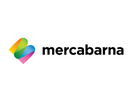Barcelona's Mercado Central de la Flor - Mercabarna-flor - celebrated its 40th anniversary on November 17. The event was attended by the president of Mercabarna and deputy mayor of Economy, Hacienda, Economic Promotion and Tourism of Barcelona City Council, Jordi Valls; the director general of Mercabarna, Pablo Vilanova; the president of the Guild of Mayors, Miquel Batlle, and about 1,000 florists and interior designers from all over Spain.

The anniversary has coincided with the 40th edition of Mercabarna-flor's Mercademostraciones, which mark the trends in Christmas floral decoration throughout Spain.

The roots of Mercabarna-flor
Since the end of the 19th century, the wholesale sale of flowers and plants was held at night on the Ramblas in Barcelona, because during the day it was occupied by florists. Hence the number of the Rambla de las Flores.
In 1964, with the growth of the city, the Mercado Central de la Flor de Barcelona moved to the Palacio de la Agricultura, in Calle Lleida, where it was until 1984, when it moved to Mercabarna, where the Mercado was already located Central de Fruits y Hortalizas and the Central Fish Market, originating from the old Mercado del Borne and Calle Wellington, respectively.
An unfortunate fire in 2001 burned the Mercado Central de la Flor, and forced the management of Mercabarna to build a temporary market quickly so that the wholesalers could continue working.
In 2008, a new market was inaugurated in Sant Boi de Llobregat, Mercabarna-flor, a modern space adapted to the wholesale sale of flowers, plants and accessories, to the needs of retail buyers and which allows professionals to face the challenges that arise changes in shopping habits and digital transformation.
The president of Mercabarna, Jordi Valls, has highlighted that "Cities need water, food, energy, flowers and plants but they are culture and knowledge centres. And curiously, in the place occupied by the old wholesale markets of the city, there are now cultural and knowledge centers, such as the Borne's Museum, the Lliure's Theather and the future City of Knowledge, which is being built on the grounds of the old market fish central market in the Wellington street".
The vice-president of the Mercabarna-flor wholesaler association, Josep Reig, third generation of a family of wholesalers from Las Ramblas in Barcelona, has explained that "the sale of flowers on Las Ramblas was born spontaneously, at the end of the s. 19th century, when some vendors began to sell wholesale flowers early in the morning and, little by little, the producers of the Baix Llobregat zone and the Maresme zone began to take more and more flowers and plants, until it became the central market of flowers and plants most important in Spain".
The general director of Mercabarna, Pablo Vilanova, has stated that "Mercabarna-flor is now a market of reference in the flower sector, but this is a story of resilience because the sector has gone through all the colors, like the colors of the flowers they sell" and has mentioned, among others, the fire that ravaged the Market in 2001, the 2008 crisis and the Covid, moments, these last 2, above all, in which the demand for flowers and plants decreased much".

Spaces that mix the classic and the modern, white tables, red toques and candles
The event also coincided with the 40th edition of the Mercadomostracions del Mercado, an event that presented the latest trends in Christmas decoration, in front of around 1,000 florists and decorators from all over Spain.

The degradation of materials during the holidays is part of the decorative beauty
The artistic director of the Mercademostraciones of Mercabarna-flor, Marta Arnau, professor of floral art and owner of the prestigious Dadaflor floristry, has explained that this year the trends revolve around the connection with nature. "Spaces that mix the classic and the modern -he affirmed-, organic and sustainable decorative elements, play of textures with natural ornamental greens that dry out over the holidays, making the degradation of materials a form of beauty ".
Throughout the day there were demonstrations, contests and floral art workshops led by prestigious international designers, who showed the different innovative proposals for decorating fir trees, tables, homes and shops this Christmas.

Dark and deep colors and many candles give a warm air
Thus, it has been possible to see that during these holidays you will see dark and deep colors, which with the light of the candles will give a warm air to the surroundings, white tables decorated with white Christmas flowers, red details and many candles. In addition, old grandmother's vases and plates with small floral details and handmade decorative elements.

For more information:
Mercabarna-flor
www.mercabarna.es
